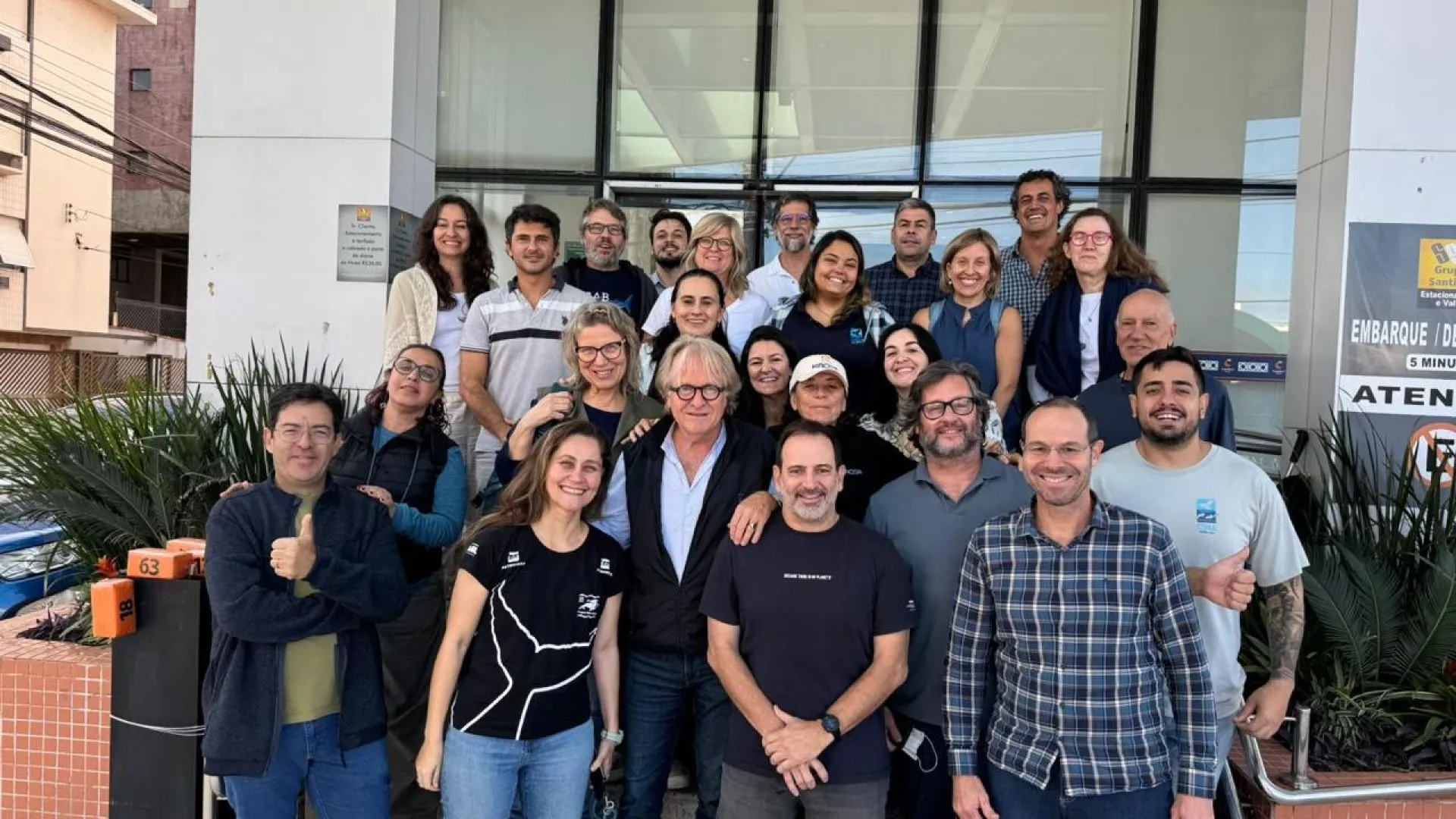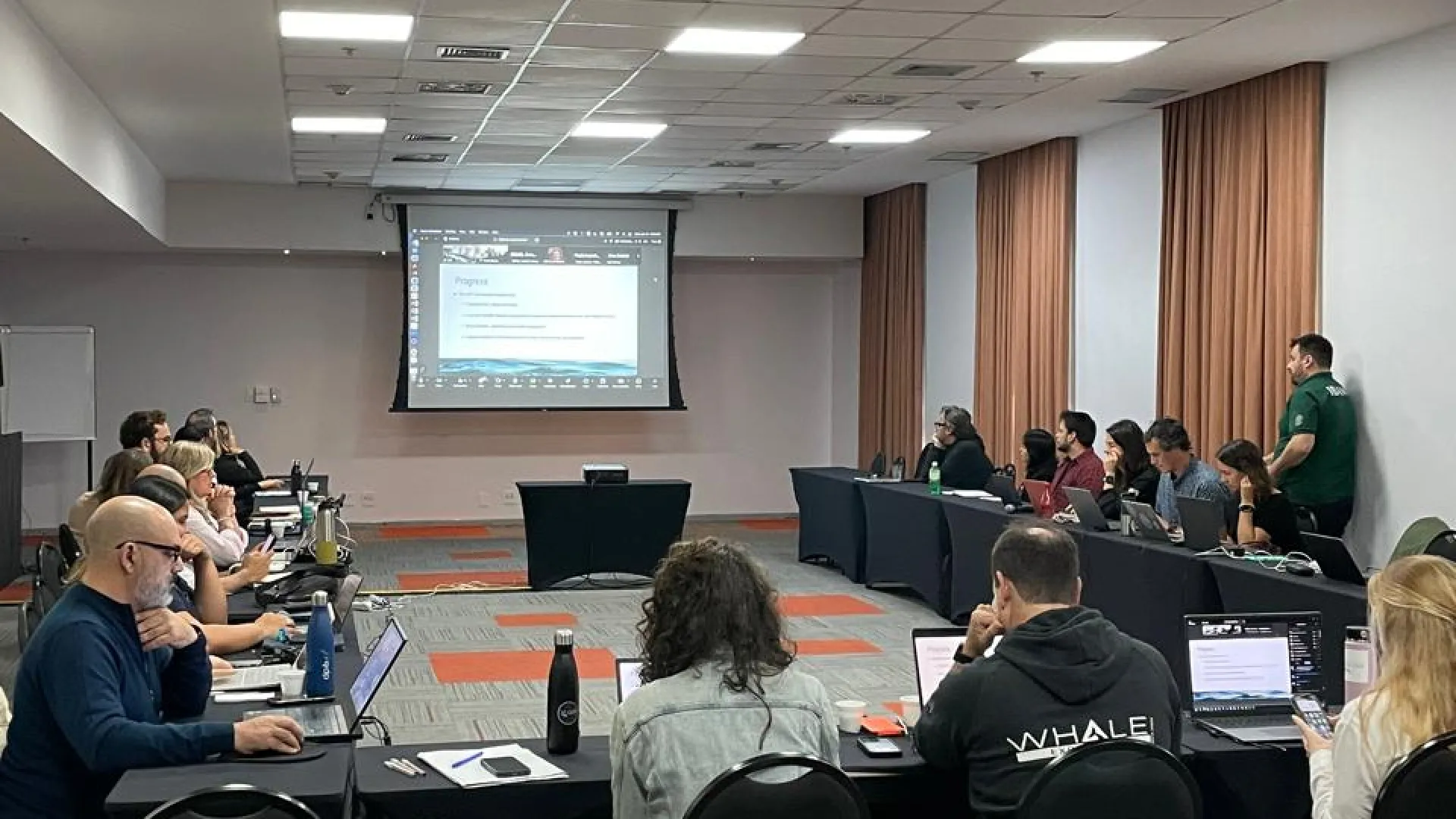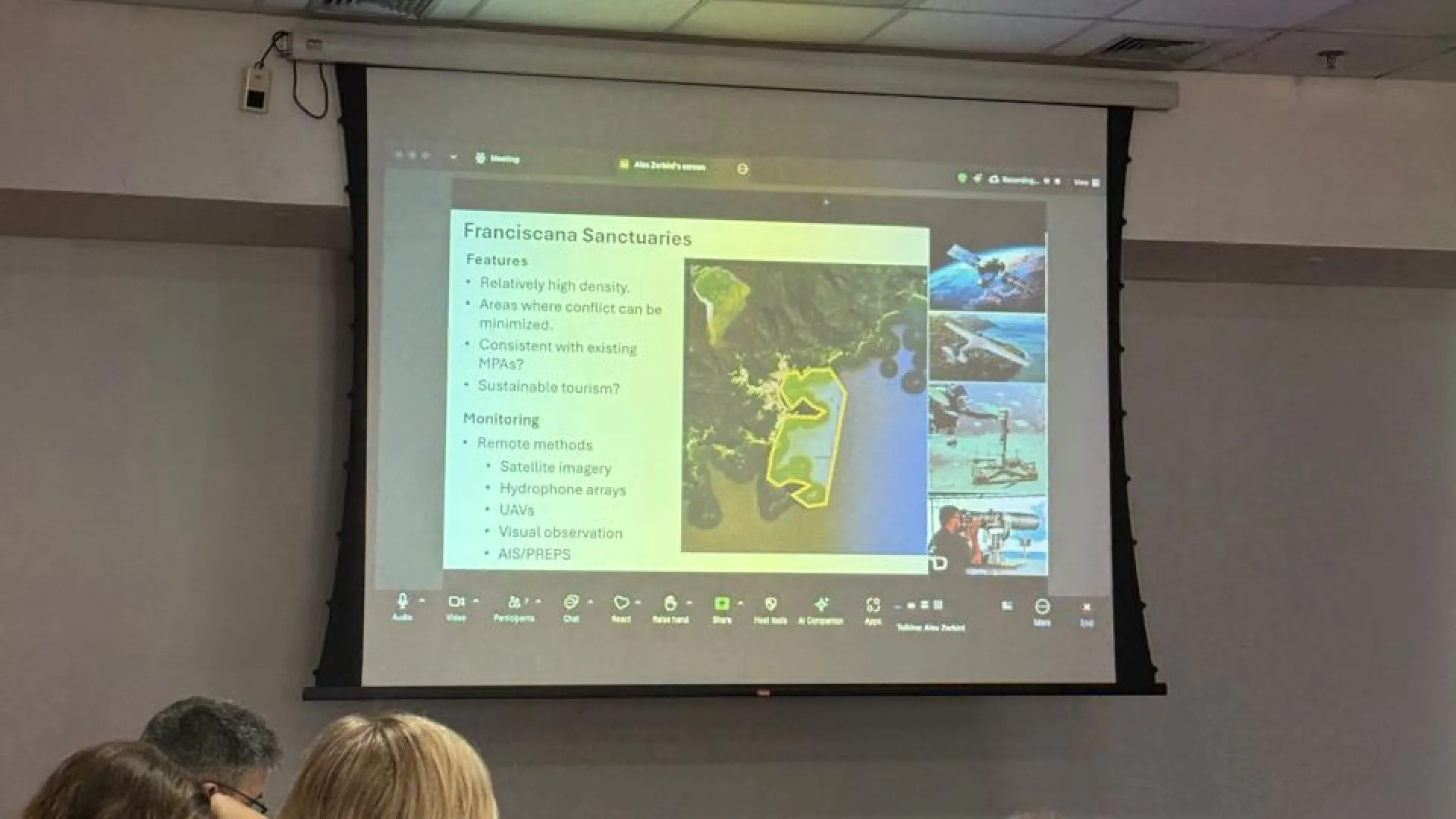News
IWC Workshop in Santos (Brazil) highlights urgency in conserving Lahille’s bottlenose dolphin
From June 30 to July 5, 2025, Santos (SP) hosted an international meeting organized by the Scientific Committee of the International Whaling Commission (IWC), in partnership with Brazil’s Ministry of the Environment and ICMBio, to evaluate Conservation and Management Plans (CMPs) for six cetacean species in South America.

Researchers from several South American countries, the United States, and Asia attended, including IWC Scientific Committee Chair Lindsay Porter and workshop organizers Alexandre Zerbini and Els Vermeulen. Among discussions ranging from southern right whales to river dolphins, one of the highlights was the urgent debate on Lahille’s bottlenose dolphin (Tursiops gephyreus), a critically endangered species endemic to the Southwestern Atlantic.
The situation of Lahille’s bottlenose dolphin was presented as especially critical. Recent data indicate that fewer than 600 individuals remain across its range, from southern Brazil to Uruguay and Argentina, organized in small, low-connectivity populations. Bycatch in fishing nets remains the main threat, along with habitat degradation and growing concerns over population health.
Researchers highlighted recent evidence of a sharp increase in skin lesions among some groups of dolphins, which may be linked to low immunity and pollutant exposure. These signs reinforce the need to integrate health assessments into management plans, since factors such as chemical pollution and environmental degradation can compromise the species’ immune resistance and exacerbate the impacts of bycatch.
Another important development discussed in Santos was the resumption of data collection in Argentina, a recommendation repeatedly made by the IWC Scientific Committee over the years. This effort is essential to fill knowledge gaps across the species’ distribution and strengthen regional conservation. Preliminary results from the first campaign in Bahía Blanca were presented, including initial abundance estimates.
The importance of social studies with traditional fishing communities was also emphasized, recognizing that only through dialogue, engagement, and alternative livelihoods is it possible to reduce accidental dolphin mortality. Citizen science initiatives, such as community monitoring and awareness campaigns using audio and video, showed broad reach and a positive impact on public awareness.
The coordinators of the Lahille’s bottlenose dolphin CMP — Pedro Fruet (Kaosa), scientific coordinator, and Leandro Aleranha (IBAMA), governmental coordinator — stressed that the plan’s success depends on joint efforts among Brazil, Uruguay, and Argentina, combining science, fisheries management, environmental enforcement, health monitoring, and community engagement.
The final workshop report will be submitted to the next IWC Scientific Committee meeting in 2026, where progress will again be evaluated. The Santos meeting marked a crucial step not only in aligning research and management strategies but also in placing Lahille’s bottlenose dolphin at the heart of the international cetacean conservation agenda.

